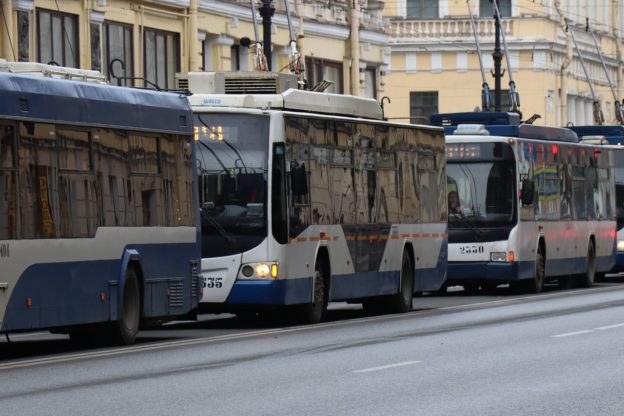
Efforts to electrify the transportation system has so far mainly involved small passenger cars, transit buses, and trains. The next stage of this transformative process will encompass other types of vehicles including trucks and heavy-duty equipment. In June, the California Air Resources Board voted to implement a rule that will require new trucks sold in the state to fully comply with the zero-emission standard by 2045. Truck makers therefore have to start preparing for the mandate as early as 2024.
To help implement this rule, utility Southern California Edison (SCE) has invested US$356 million to build charging stations for medium- and heavy-duty EVs in its operational territory. Named Charge Ready Transport, this infrastructure program aims to set up a minimum of 870 charging stations for powering at least 8,490 commercial EVs within five years.
Five locations in Southern California have been selected for the initiation of the program: Antelope Valley School Transportation Agency in Lancaster, Visalia Unified School District in Visalia, Pleasant View Elementary School in Porterville, and two sites for Porterville Transit in Porterville. Justin Bardin, SCE’s program manager for Charge Ready Transport, said that the five locations are recognized for having poor air quality. Bardin added that once completed, the charging stations at these locations will be supporting more than 80 electric school and transit buses. SEC has also emphasized that Charge Ready Transport is not a pilot project. Instead, it is a large-scale and long-term project that will make a huge contribution to the energy transition of the regional transportation system.
According to SCE’s strategic plan for the program, the first allotment of charging stations will serve school and transit bus fleets. Later, the utility will build out the infrastructure for the electrification of a wide range of commercial vehicles and heavy equipment. Examples include semi-trailer trucks, delivery vans, mobile drilling rigs, yard haulers, and forklifts. News media covering this story have stated that Charge Ready Transport is specifically designed to upgrade the logistics and shipping industry of Southern California. For the region, the logistics and shipping industry is both a key economic driver as well as a major source of air pollution and greenhouse gas emissions.
Carter Prescott, principal manager of operations for SCE’s eMobility team, pointed out that at least 75% of California’s on-road vehicles will have to be electrified by 2045 in order to reach the state’s climate targets. Included in that portion are 67% of medium-duty vehicles and 38% of heavy-duty vehicles. Prescott also stated that programs like the one his company is undertaking offers many benefits. Besides helping the environment, investing in electric transportation can accelerate the post-pandemic economic recovery by creating new jobs. Furthermore, the integration of the charging infrastructure and additional smart energy solutions into the grid will lead to more efficient power consumption and reduced electricity bills for all end users.
(News source: TechNews. Photo credit: Pixabay.)





